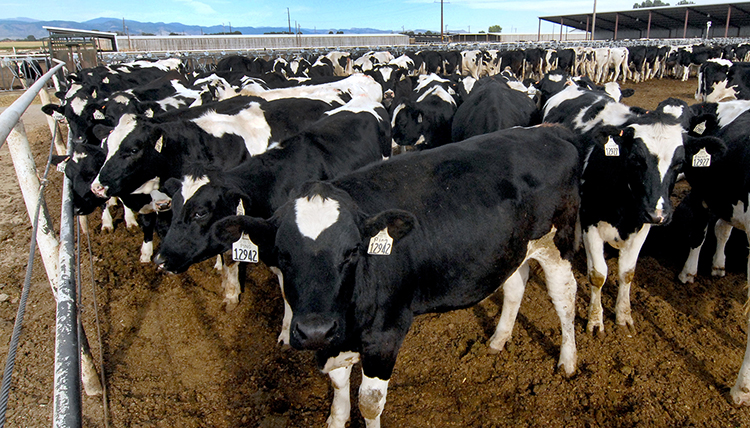
The rush to calve heifers young is likely costing dairy producers thousands of pounds of lifetime milk production, said a Utah nutritionist and consultant.
“How old a heifer is when she first calves looks like it has a big influence on milk,” said Cargill Dairy Focus Consultant Shane Holt at his seminar during World Ag Expo in Tulare, Calif., two weeks ago. “The older she is, the more she makes.”
It’s a correlation he made after close scrutiny of a large Western herd’s records — one that applied to all breeds in the herd. Animals that calved younger, he saw, had lower first-lactation peaks, lower lactation totals, and lower lifetime output.
The “sweet spot” for age at first calving was 23 or 24 months.
“You might be thinking, ‘It can’t be this simple,’” he said. “But it is. If you will stop breeding your animals so early and give them a couple more months to grow, you can pick up 10 to 14 pounds more milk per head per day during the first lactation.”
Holt emphasized it is an effect that is not limited to just the first lactation. It’s one that lasts a lifetime, although herds with excellent average daily feed gains make up some of the shortfall in later lactations once heifers fully mature.
In the very large herd he studied, he saw lifetime production differences of almost 8,000 pounds for Holsteins that first calved at 23 months rather than 21 months, and almost 11,200 pounds for crosses calving at 25 months rather than 21 months. Jerseys had the smallest lifetime gap: about 4,200 pounds when first calving at 24 months versus 22 months.
“I have convinced myself after five years of looking at this that there is nothing that will give you more milk than your age at first calving. Nothing,” he stressed.
He said he is not the only one who has come to this conclusion, saying Gavin Staley with Diamond V in California saw the same patterns after studying over 200,000 cow records at over 100 Western dairies.
“The question Gavin has asked, and I propose it to you, is why do we grow heifers to achieve maturity at 24 months of age, yet we manage (breed) them to calve at 21 or 22 months of age?” said Holt.








